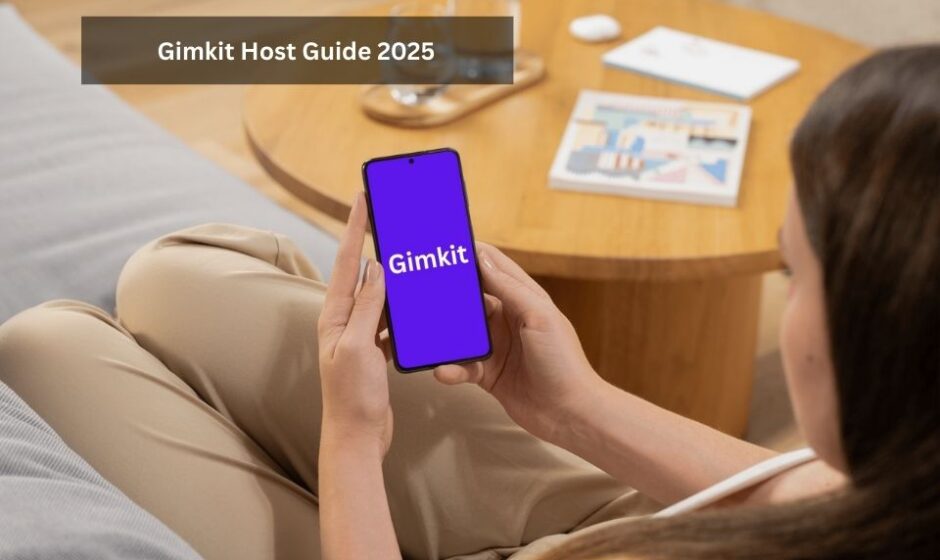Online learning platforms are revolutionizing classrooms, tutoring classes, and even corporate training. The Gimkit is one of the platforms of this sort: this platform combines learning with game-like features. Teachers and students worldwide have adopted Gimkit to make learning activities fun and fruitful. Gimkit has introduced additional advanced tools and hosting features in 2025, allowing trainers more control over game sessions.
This handbook tells you everything you should know about being a Gimkit Host in 2025, all the way from making your first game to getting players to join and hosting live sessions effectively.
What Is Gimkit?
Gimkit is an internet-based system made for interactive learning in the form of quizzes and games. It was developed by a high school student, but today it is a very popular tool in training and schools. Gimkit can not compete with static quizzes because it allows a host to create lessons as real competitive events in which students can provide their answers, win virtual money, and use power-ups.
The platform has evolved each year, and in 2025, it is more customizable, with features like:
- Live game hosting
- Homework assignments (Kit Assignments)
- Power-ups and rewards system
- Integration with classroom tools
- Flexible game modes
As a teacher, trainer, or facilitator, you’ll act as the Gimkit Host, which means you’re in control of the game session.
Becoming A Gimkit Host
To host a Gimkit game, you’ll need an account. Signing up is simple:
- Visit Gimkit.com.
- Click Sign Up and sign up as a teacher.
- Select a subscription plan, though Gimkit has a free option; more advanced features are needed under Gimkit Pro.
- Once you have logged in, you will notice the dashboard on which you can create and distribute your games.
- The Gimkit Host is able to initiate live games, provide homework kits, formulate rules and monitor player developments.
How To Make A Game In Gimkit (Step-By-Step)
Creating your own game, known as a “Kit,” is the first step toward hosting. Here’s how to do it in 2025:
- Login to Your Account – Head to your Gimkit dashboard.
- Click ‘New Kit’ – This is where you’ll design your quiz or activity.
- Enter Details – Add a title, subject, and cover image if needed.
- Add Questions – Enter multiple-choice, true/false, or text questions. You can also bring in question sets from Quizlet or upload from a spreadsheet.
- Save the Kit – Save it to your library when ready.
Your kit is now ready to host live or assign homework.
Hosting A Live Game
The primary reason for most individuals to use Gimkit is for live sessions. You can host the game in real time as a Gimkit Host and invite players. Here’s how to do it:
- Go to Your Library – Select the Kit you wish to host.
- Click “Host Live” – It opens hosting options.
- Select Game Mode – Gimkit has several game modes, such as Classic, Team, or The Floor is Lava. Choose one that suits your classroom or training session.
- Adjust Settings – Set game length, goal score, power-ups, and music.
- Create a Game Code – Gimkit generates a unique code for your session.
- Share with Players – Students or participants go to Gimkit.com/join and enter the code to join immediately.
Throughout the game, scores can be tracked, sessions can be paused, and players can be managed.
Joining A Gimkit Game
As a player, joining is straightforward:
- Go to gimkit.com/join.
- Input the game code provided by the Gimkit Host.
- Select a name (hosts might limit this to actual names).
- Begin playing when the host starts the session.
This rapid-entry system is one of Gimkit’s greatest strengths, as no player account is required.
Managing Games As A Gimkit Host
Hosting a successful game is more than simply starting one. In 2025, Gimkit will provide strong features to host your session:
- Control Pace: Pause, add time, or close games whenever required.
- Monitor Engagement: Monitor live scores for individuals and teams.
- Beautify: Enable power-ups and bonuses to encourage participation.
- Modify Game Rules: Customise the game rules through answer streaks, multiplied money or time limits.
- Review Reports: Gimkit provides detailed information on performance, which may be reviewed after the game is ended.
All these aspects contribute to the fact that Gimkit would be appropriate not only in classrooms but also in business training courses, workshops, and even online events.
Tips For Successful Gimkit Hosting In 2025
- Plan Ahead – Construct your Kit with a blend of simple and tough questions.
- Employ Team Mode for Collaboration – Particularly in large groups, teams promote collaboration.
- Balance Competition and Fun – Inspire education rather than mere victory.
- Leverage Reports – Use Gimkit’s rich reports to monitor development and enhance your next session.
- Switch Game Modes – Experiment with new modes on a regular basis to keep the players interested.
Why Use Gimkit In 2025?
With hybrid classes and remote learning being the new normal, interactive resources such as Gimkit are a must. It is not a quiz per se; it is participation, engagement, and long-term retention. You add some vitality to learning as a Gimkit Host, and each lesson becomes a captivating challenge.
Final Thoughts
The role of a Gimkit Host in 2025 is beyond playing the game, and it is more about creating a fun, team-based, and educational time. By being able to work around Kits’ design, run the sessions and games efficiently, teachers and instructors can make the learning process exciting and memorable.
Whether you are in the classroom, governing a virtual meeting, or even in workplace training, Gimkit gives you the strength to transform learning into an adventure. Now is a good moment to start hosting AF if you have never done it.



